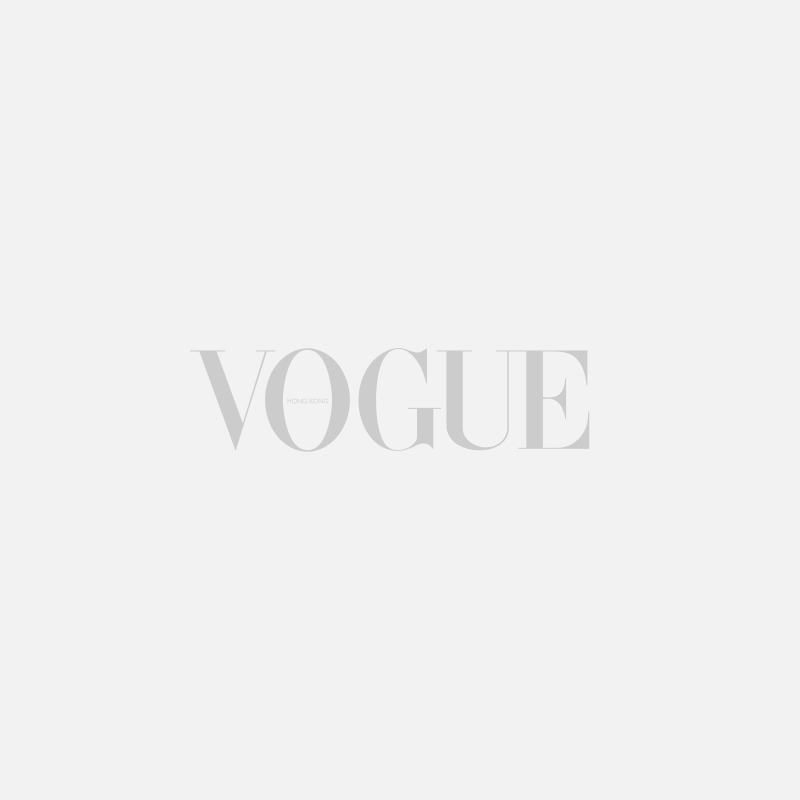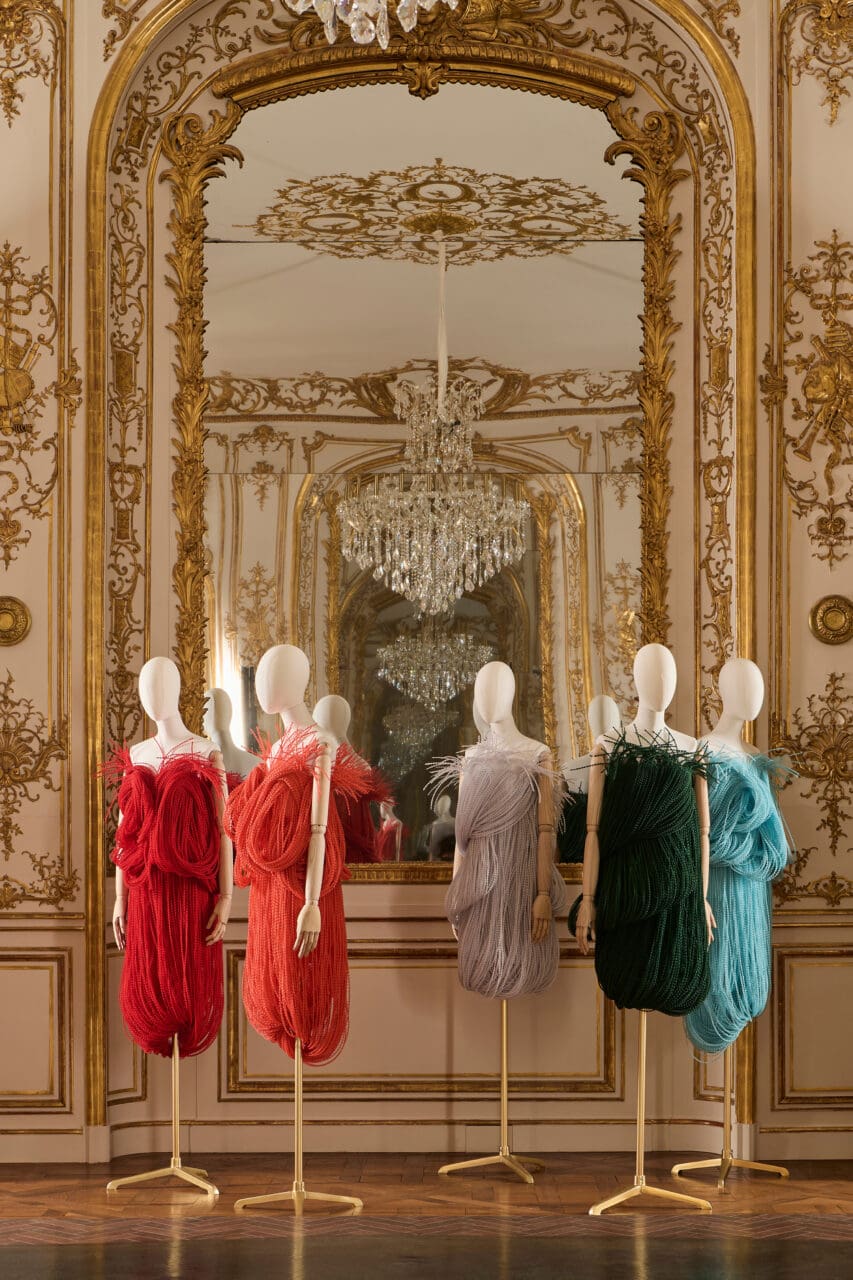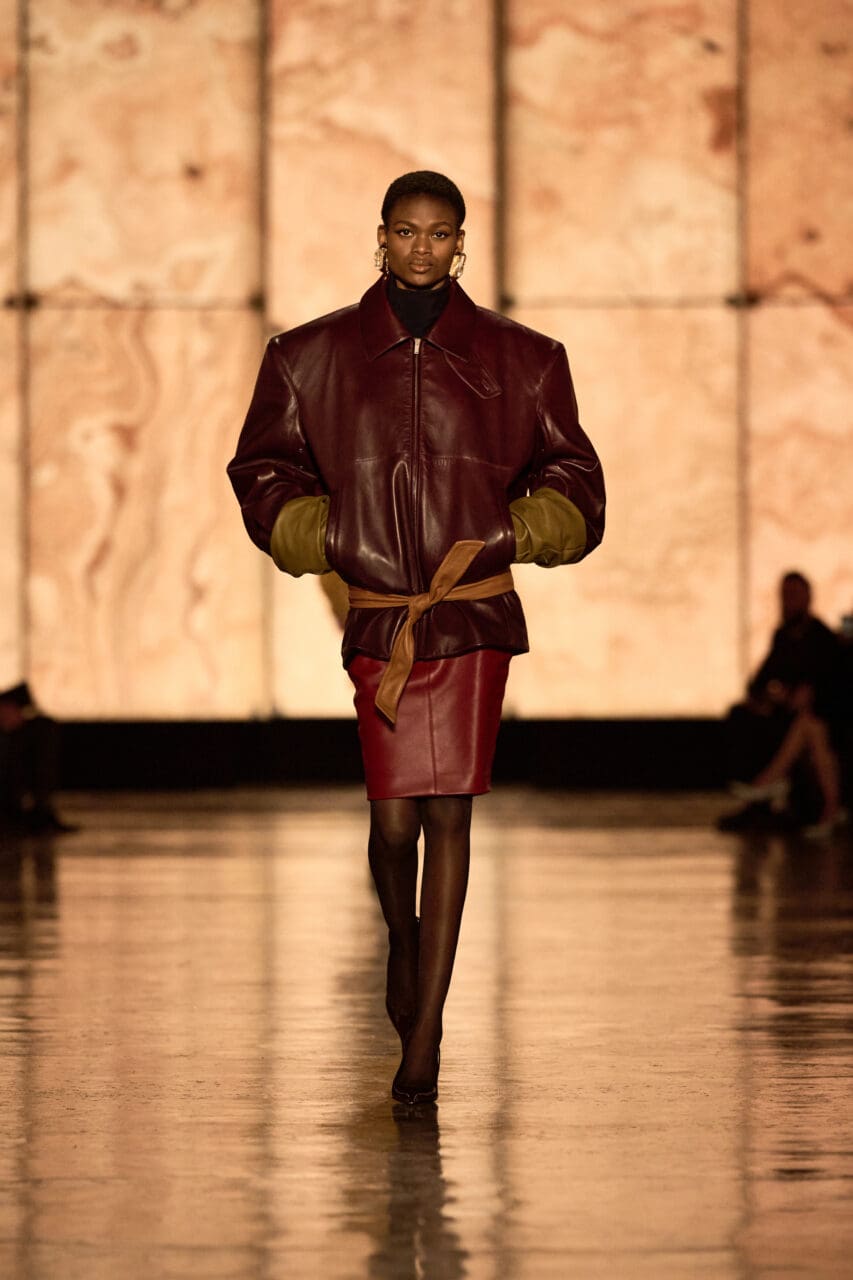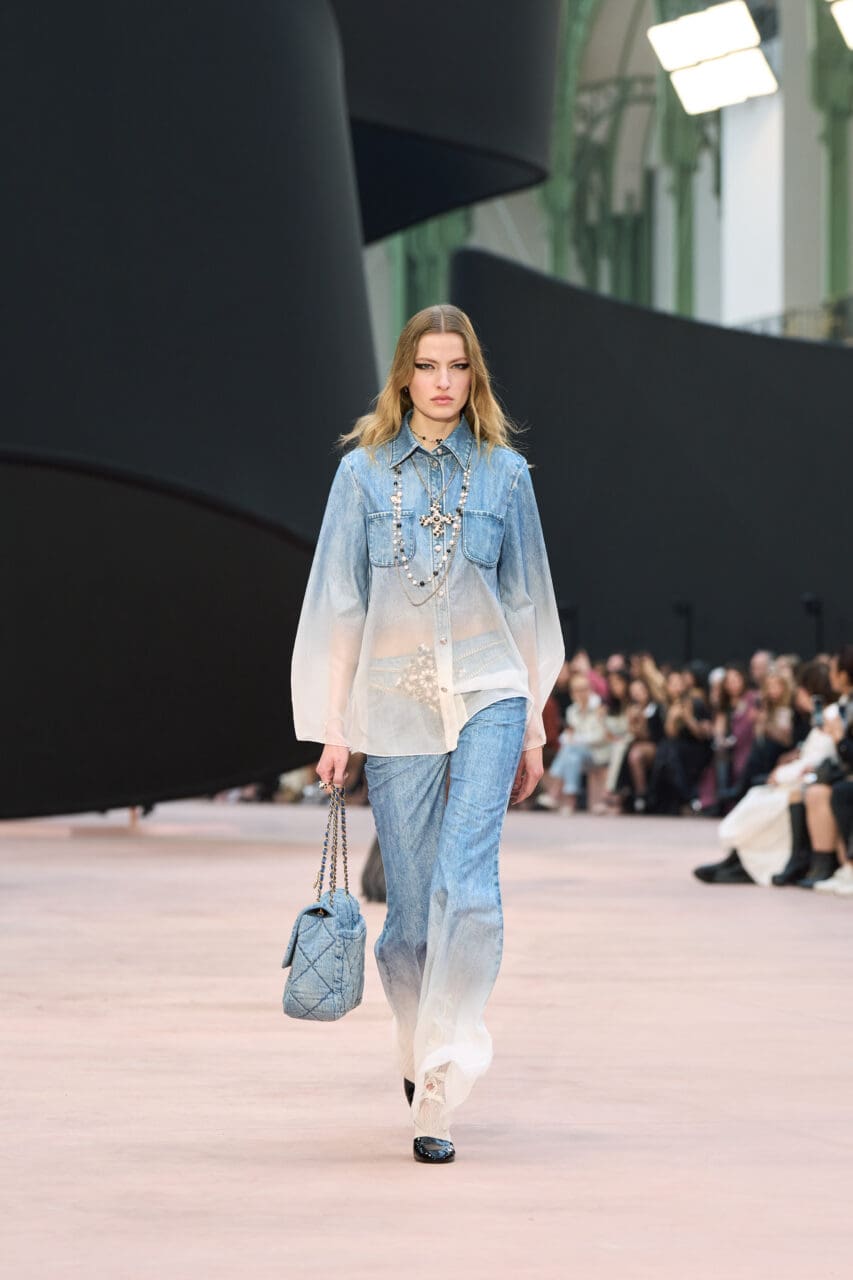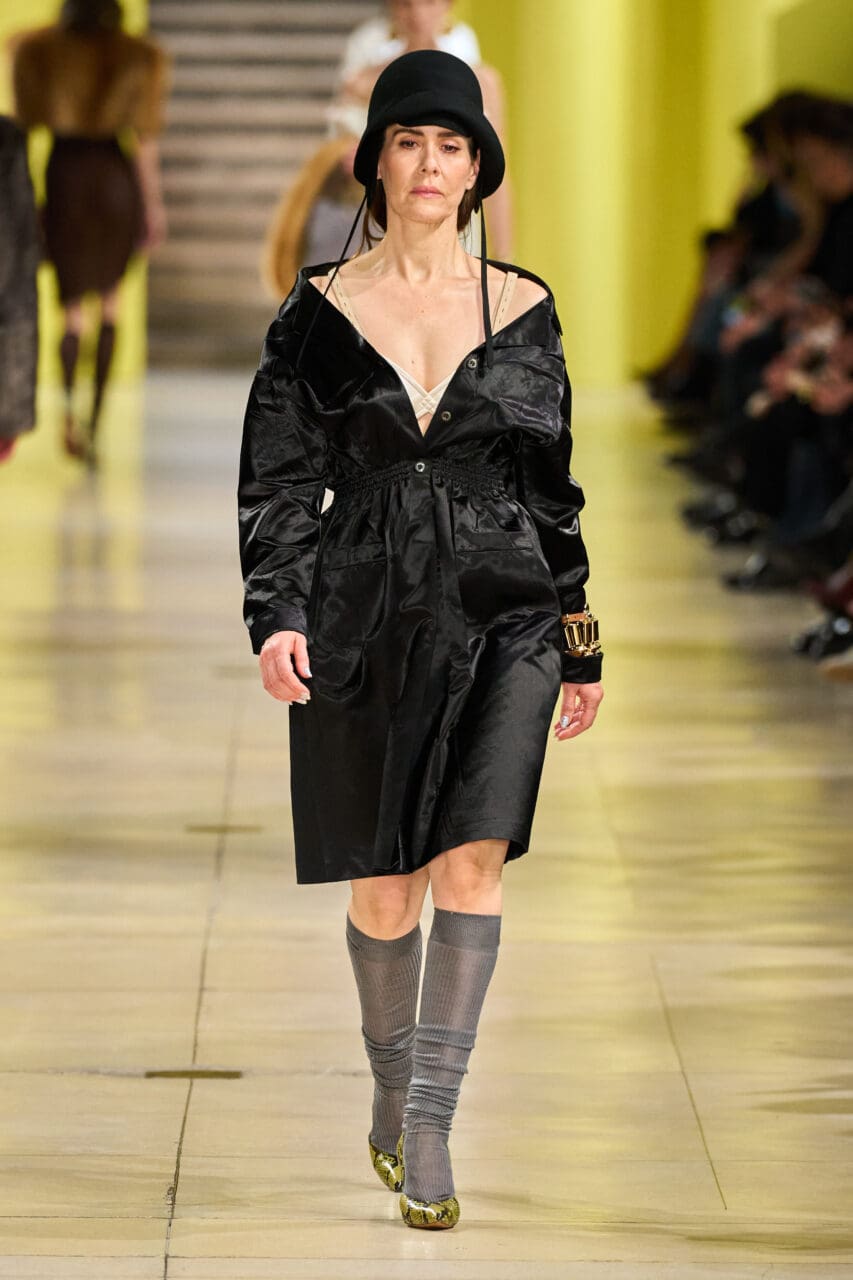“I enjoyed this one because it was about doing precision. My own interpretation of precision.” A decade since his first collection for Loewe, Jonathan Anderson is still finding fresh lines of investigation to mine.
Today’s show was set within a group display of works by creatives whose “singularity” he admires; these included a copy of Susan Sontag’s Against Interpretation just next to Easel by Carlo Scarpa (scarpa means shoe in Italian). Pre-show, bulky security guards loomed with entertaining absurdity of scale over the macro sculptures of Paul Thek’s Pied Piper series. There was a Peter Hujar photo of a stiletto scarpa that Anderson said was a starting point for this collection. And as well as one of Charles Rennie Mackintosh’s chairs, there was a surprisingly industrial looking coat rack in oak and iron around which was laid a feather boa; a Loewe team member adjusted it minutely according to instruction delivered by head-set just before the show began.
All of this reflected the group show whose disparate exercises in minuteness and precision delivered a series of what Anderson described as “razor looks.” Slim silhouette, very French C-suite tailoring with almond-toe leather oxfords in black opened the show. Anderson said that Loewe had developed the fabric in woven silk mohair to have a purposefully spongey finish. With movement, there was a very gentle sense of bounce. These suits were an example of: “things that are incredibly difficult to do but that which when you see them it feels effortless.”
Perhaps tangentially informed by the thoughts of Thek, another singular Anderson theme this season saw him deliver garments that stretched your expectations of scale and setting. House labels were transformed into smocked shirts. Vests were fronted in sections of what resembled watch strap links, or mother of pearl.
Shorts and t-shirts were painted with a cable knit shaped finish. Edged in golden piping and emanating a shiny gleam, they appeared almost ceramic. Cropped shirts and pants were linked with a double circled belt that spiraled down the stomach to the hip to create a garment that seemed both unified and divided. A short-sleeve shirt was fabricated in sections of tonal fringe that resembled a hairy houndstooth, while a long brown coat was made in nappa leather on its right side that gradually transitioned into ostrich on its left. The deep unbuttoned neckline in a blue shirt extended below the waistline of the pants below it, while double-faced coats were stiffened so that their skirts unfolded or flew up to apparently defy gravity in a kind of frozen drape.
Anderson said the gold or monochrome feathers were there to divide our view of the faces beneath them as part of his consideration of forced perspective. This was a collection that stimulated you constantly to question exactly what it was you were seeing.
Editor
Luke LeitchCredit
Lead Image: Isidore Montag / Gorunway.com